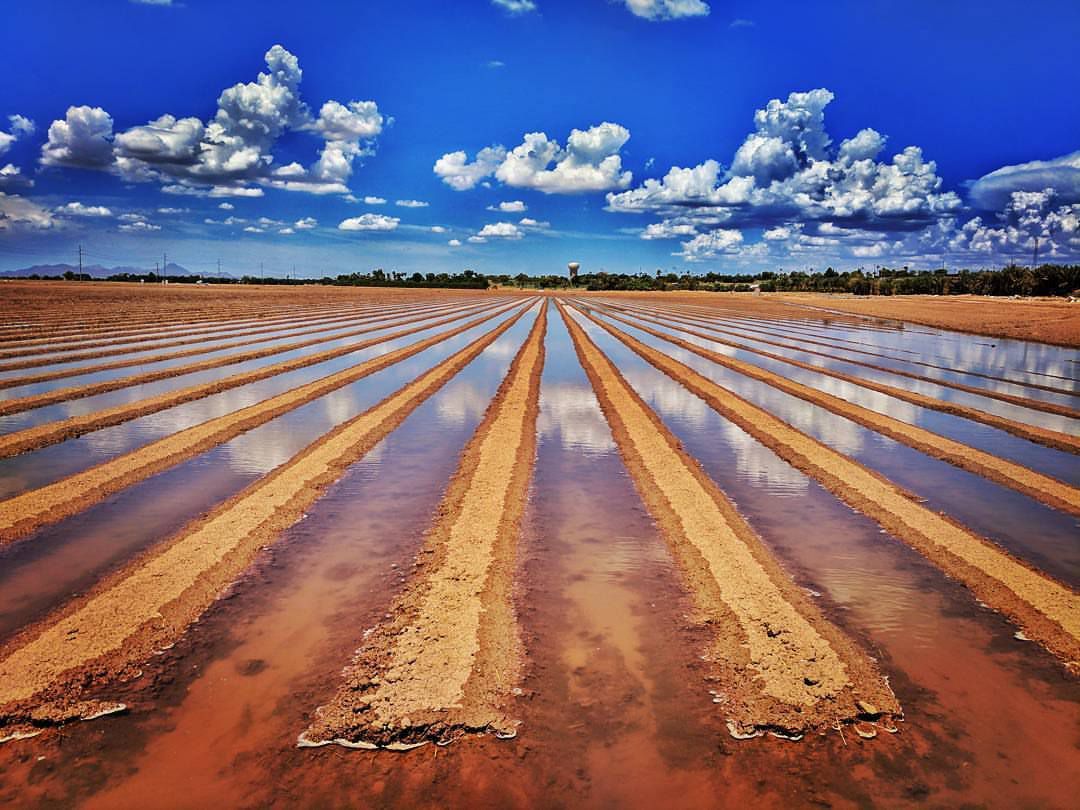Want to Conserve Water? Don’t Waste Your Food!
Author
Published
5/11/2018
Every bite of food you take contains water. And, that food you’re eating took certain amounts of water to grow. So, when you waste your food, you waste water.
Out West, water is truly our precious resource. In our current prolonged drought, tempers are even a bit heated as we try to resolve our water issues.
In the meantime, power brokers in urban areas are expert at pointing fingers at agriculture. Some estimates suggest that 80% of developed water goes to agriculture. In Arizona, the figure is just under 70%.
But, if you take water away from agriculture, water is really being taken away from you. Besides the direct delivery of water brought to you daily by your shower head, water faucet, and that regular toilet flush, you’re also getting water delivered to you with every bite of food.

Your intake of water starts here when the farmers grow the food you'll be eating soon. (An irrigated field in Yuma, Arizona. Photo courtesy Jonathan Dinsmore, Yuma farmer.)
A report by the Water Education Foundation documented the amount of water required to produce various foods in the Western U.S. Their approach divided average evapotranspiration by average yields to determine the gallons of water per pound of food produced.
In their research, they took a typical 2,300-calorie menu proposed by the U.S. Department of Agriculture and constructed the menu. (We show a brief sample of three food items.)
In general, if you calculate the water it took to grow the food on your plate, you’re eating nearly 2,000 gallons of water a day.
Example Foods | Gallons of Water During Production |
Two Eggs | 126 gallons |
Taco Salad | 806 gallons |
Almonds (1 oz) | 80 gallons |
Does not reflect entire 2,000-gallon daily food intake on a 2,300-calorie menu. Go to the Water Education Foundation to learn more.
The water we consume may not come from our faucets, but from every precious bite of quality food we consume. And, that food originally came from a farmer.
Conserve water by not wasting food.
Join Our Family